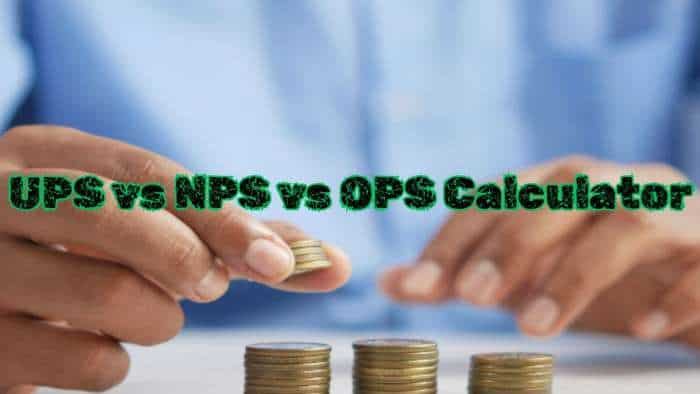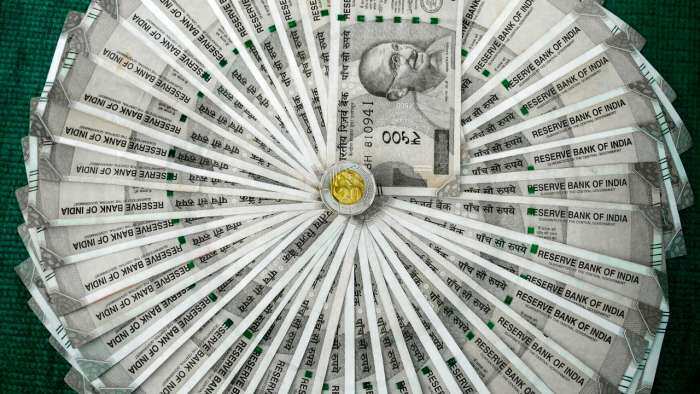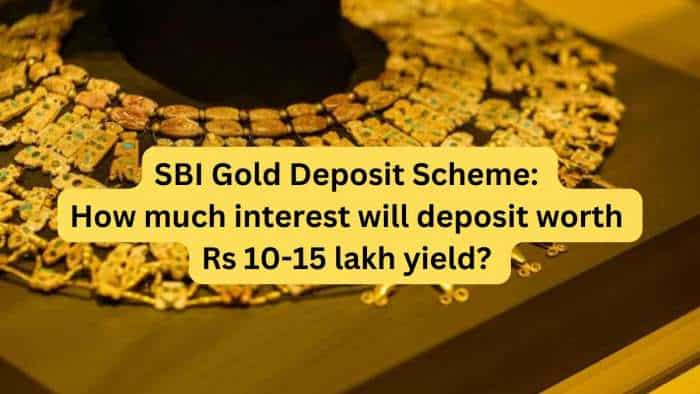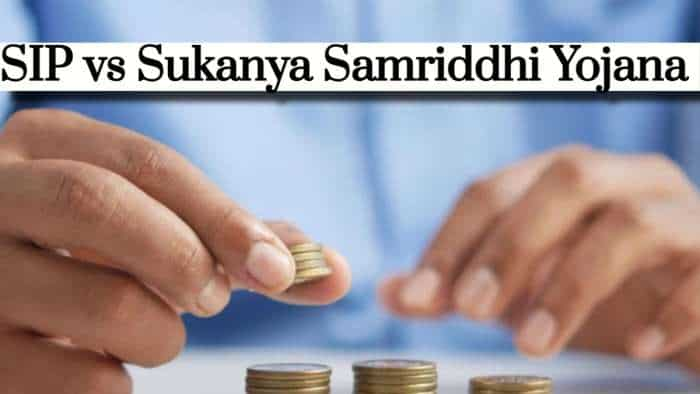India-designed core network of 5G will be ready by Q3FY23: Ashwini Vaishnaw, Minister for Electronics and Information
The government has approved a comprehensive Rs 76,000-crore package to build a much-needed semiconductor ecosystem in the country

Union Minister for Electronics and Information Technology, Ashwini Vaishnaw, talks about the Rs 76,000-crore package to create a comprehensive ecosystem for semiconductor chip design, packaging and manufacturing, 5G spectrum, PLI Scheme for the telecom sector, telecom industry, Plans for MTNL & BSNL and optical fibre among others during an exclusive interview with Zee Business' Swati Khandelwal. Edited excerpts:
Q: The government has approved a comprehensive Rs 76,000-crore package to build a much-needed semiconductor ecosystem in the country. Tell us exactly what this policy is and will we be able to become number 1 on this setup?
A: Prime Minister Narendra Modi has approved a package to develop a comprehensive semi-conductor ecosystem. Electronics are used in almost everything that you are using and semi-conductor chips are the core behind electronics and currently, there is a global shortage of them. The comprehensive package has been made by thinking about how an ecosystem for it can be developed, how India will turn self-reliant (Atmanirbhar) and how in short-term, medium-term, long-term and the next 20 years how the industry will continue to grow. What are the elements of this package? If you will have a look at the value chain of a semi-conductor, then a wafer comes first in this value chain, a silicon wafer. Chips are printed with precision in nanometers on these wafers - a nanometer is 1000 times smaller than the diameter of the hair that we have - and then these chips are taken out finely from these wafers and a package is made out of it. Package means, creation of its body, legs, power supply among others, on it. The chips are made after this packaging is taken into the circuit. Then the circuit goes in any device like mobile, camera, jet engine, railway engine and other electronics. Creation of this entire ecosystem will need Silicon fabrication (FAB), display fabrication (FAB), compound semiconductors, design ecosystem and talent pool creation and complete ecosystem has been approved by honourable Prime Minister.
Q: It will take time as this is not an overnight thing, that's why people were speculating that India will take a long time to bring this on the ground. It requires a lot of investment and at a large scale and by the time production will happen. It will take time and there is a shortage. How do you see this and what will be the timelines for it?
A: The compound semi-conductor plants will be started in the next few months. Big display and Silicon Fabs will take some time, around one to one-and-a-half years time, and the work will start. As far as the design ecosystem is concerned, India already has around 20,000 high-quality design engineers, who are designing semiconductors for the world. They should get better facilities so that they can create their own Intellectual Property Rights, semiconductor intellectual property core (SIP core) is created in the country and all these factors will run in parallel. In this entire ecosystem, the compound semiconductors that are used in the automobiles, power electronics, main stations of the telecom, the electronics available at our homes, consumer electronics, i.e., the white goods, and photonics available in the LED Lights, will come very soon (in a short term).
Q: Any guess, what time it will take?
A: Again, we will look at it not just to meet the current shortage, we have to look at where do we want to take the nation. When Prime Minister Narendra Modi thought and took a pledge to make India a hub of electronics manufacturing, then our opponents were laughing and asking how it will be done. But, today, within 4-5 years, we have already reached electronic manufacturing worth $75 billion (Rs 5.50 lakh crore) and the way we are growing in the next five years, will turn into $250 billion (Rs 18-19 lakh crore) industry. The biggest raw material that will be required to fit into it is a chip and if we are creating this then we have a design ecosystem, an ecosystem to consume the chips, talent and a transparent government. This is a very big step towards making the country self-reliant (towards Atmanirbharta).
Q: When you started thinking about the policy then you would have talked with the companies, who can be interested and can invest in it. What was their view and are you confident that at a large scale and big names are ready to invest in India and how their concerns have been addressed?
A: There has been a lot of extensive stakeholder consultation. In it, we had consulted academicians, industry participants and supply chain as the gases, that are used in it is quite complex and specialised gases. We discussed the infrastructure that is required, it needs ultrapure water, 24*7 double redundancy power supply, land that will be required and the facilities that should be available for the land. We also had consultations with the state governments. So, the process of consultation was very very extensive. Secondly, what the industry needs, what are the pain points for it? Thirdly, does the industry see a long-term vision or not? All these factors were analysed in the package that has been approved by the Prime Minister. The biggest element in this is the job and 35,000 high-quality jobs will be created in it, directly. Plus 1 lakh indirect high-quality jobs will be created in it. In addition, Mr Prime Minister has given the vision to grow the industry for the next 20 years. If India has to become a very big player/force of semi-conductor, what is needed the most for it, it is brain and talent. How talent can be created? Mr Prime Minister gave C to S (chip to starter). 85,000 highly talented engineers we will create in this program and for this purpose, we are tying up 60 institutes. A lot of homework has been done before announcing the package and we will work in collaboration with 60 institutes. Very soon you will be seeing the results and the compound semi-conductor plants will be established very soon, display and silicon FAB will take more time for it and design soon. In the coming days, you will see that one by one everything is ready.
Q: You will cover up 50% of the cost as part of the strategy?
A: The most important for the semi-conductor industry across the world is the kind of capital support it gets. The capital investment support is a very critical factor and we are going with the global benchmark, which is 50% capital investment support. Basically, there is a need to understand that if four countries are providing the same capital support then why will they come to India? What is our USP? Our USP is our talent pool, design engineers. Globally, 20% of people in the semi-conductor industry are Indians, which means the global semiconductor industry is running on the Indian brain. Plus, Mr Modi has provided a 20-year roadmap of growth. If a roadmap of 20-years is out then every industry thinks about investing in it. Thirdly, the ecosystem to use these chips in the electronics industry and this ecosystem was created in the last five years and based on the same, this semi-conductor policy was announced.
Q: Possibly, you would have had discussions with big players and names on this and understood what are their requirements. So, what kind of commitments are visible in terms of big names being ready to come and invest in India?
A: Both big and small. A small investment is required for the compound semi-conductor ecosystem and small plants are established in it. We have not neglected them. I feel that around 15-20 of the small players will be approved immediately and will start setting up in the coming months, not years. Full arrangements have been made for them as well. Plus in packaging, I would not like to name it, a country has created its identity in the semiconductor industry, they started the packaging work first and took it 100% by all the ways. After that gradually went on doing backward integration. Now, there will be a lot of small start-ups in the packaging industry, compound semi-conductor industry and design. There will be around 100 start-ups in design, currently, we are in a planning stage but they will start soon. We expect that out of those 100 at least 10-12 will turn up to be the global leaders. So that is the way we are thinking. Just thinking with the perspective of big will not make it happen. It is a very big and complex industry and comprises several stakeholders. It is complexity was less, than every country in the world would have done it.
Q: So, let us know about the big players that we can expect here? Will you focus more on domestic companies, which are Made in India viz-a-viz what if someone from outside would like to come and make it here? What will be your approach from that aspect? Also, what will be the role of the PSUs and do you think that there is a good opportunity?
A: This technology and the industry is quite complex and very few people can handle this complexity. This is such a thing that we have to think about it in a very comprehensive way
and we cannot put them into the grooves of small & big; PSU & non-PSU; Indian & non-Indian. We will have to have a very clear vision for it, a clear target and will have to move in the direction with a thought that what is required to be successful in it and jot them pointwise. So, I will not provide any name at present but soon you will see that some action happens and in a transparent manner.
Q: Are big companies are ready to invest in it?
A: Of course people are ready for it and an Investment of Rs 1.70 lakh core will come in it, which is not a small thing.
Q: Over a period of how much time it will happen?
A: In the next 5-6 years and then they will not stop it. After taking the initial experience and learning more from it, we have to make the industry bigger.
Q: You have said that you have had consultations with all the stakeholders. Can you please name the states that are moving ahead?
A: Naming any state is not a good thing but many states and union territories are quite interested in it.
Q: You have talked about specific numbers in terms of plants?
A: We will have four big plants. 15-20 units of Compound semi-conductor, which are mid-sized and small units. 15-20 units for packaging and around 100 units of design or 100 start-ups. It is a very big program and comprehensive. Mr Modi thinks far ahead of time.
Q: There are talks related to the 5G spectrum and we are coming close to the auction, there are concerns related to the pricing and network strength among others in telecom companies. How will you address this concern?
A: Spectrum in telecom was traditionally viewed as a revenue maximization model. But COVID has shown that the spectrum and telecom industry itself has an element of the public good. Public good as in something on which people depended, everything went digital. Now, how to bring this balance. Countries across the world and their policymakers are thinking about it. TRAI is the regulator in our company and it has already uploaded a consultation paper. Consultation has started with the industry as well as other stakeholders. It would not be appropriate for me to comment at this point in time. Let TRAI complete the consultation process.
Q: But, how do you see it as a minister and should the telecom companies should look for some surprises?
A: We should move ahead in a transparent manner. How can we move ahead in a transparent manner then the Parliament has made a law, i.e., the TRAI Act and as per the TRAI there is a very transparent method of consultancy and it is based on the views of everyone including the Supreme Court and we should move as per the law. My comments will not be right.
Q: It means that there should be a win-win situation for everyone?
A: We have to reach a capability where our technology can manage the networks across the world. We must have a say in the global standard. Telecom equipment should be manufactured in our country.
Q: You have launched a PLI scheme on it?
A: It is quite good and 35 companies have already started working on it. I have met with many companies and a lot of engineers, they are quite enthusiastic about it.
Q: It is visible and a lot of work is being done to take this industry from the sunset towards sunrise. So, the four-year moratorium that was announced for the telecom companies is enough or more can be done?
A: The element of reforms that were approved by the Prime Minister in September is more important than the size of the financial size of the package. Whenever reforms take place, it leaves a long-lasting impact and it is not limited to a day or two but it is felt for many years. The Prime Minister's vision on telecom is that how do we do a benchmark on regulation and that is a very very important part of his vision. We are working on it at present and very transparently are consulting every stakeholder and coming out in a way that no one gets a chance/scope to raise even a single question on the industry. It should be as the industry is transparent, it remains an industry of growth and meets the digital aspiration of people.
Q: At a point in time, there were around 8-10 players in the industry which has dropped now to three to four. Is there any scope that new players can get into it and are we heading in that direction?
A: Of course, it is there. As the technology changes, then the inflexion point is a time when new players can join in. So, we are moving from 2G to 3G to 4G and now 5G and that inflexion/transition are on. New players usually come in when a new technology comes into existence. We will welcome and it should happen.
Q: It is a strategic sector as the government has said and you will have your presence in it through MTNL and BSNL. The asset monetisation of MTNL is in the works but in the end how the company will look alike?
A: It is a very good question and this is very close to our government's vision. The operating businesses of BSNL and MTNL should be strengthened. How it will be done? Our homegrown 4G and 5G plus capital support will help these companies in mobile connectivity and fibre connectivity. The biggest strength of these two companies is taking fibre to every door and maintenance of that fibre. Would you believe that BSNL has given 17 lakh fibre connections in the rural areas and it is growing at a good pace since the support package for BSNL & MTNL was announced by PM Modi? Now, their balance sheet has become healthier, the organisation has become linear, forward-looking, in fact, there is clarity in the organisation, It is moving ahead at a good pace.
Q: Will these two companies will be merged to become one entity?
A: The work is still in progress. How it should be done and what is the right way because there is a need to repair the balance sheet further.
Q: I think the process is ongoing as more asset monetisation is there?
A: Asset monetisation is not as important as maintaining and strengthening the operating business, which is the focus is. We did the first 4G phone call from its POC in Chandigarh and 5G is being developed at a good pace, maybe by the third quarter next year or by the end of the next year, Indian designed core network of 5G will be ready in the country.
Q: By next year?
A: Work is being done on it and C-DoT is working on it.
Q: Is the work on optical fibre is going on as per plan or there are some issues?
A: In connectivity, Prime Minister, some three weeks ago in November, has approved a package of Rs 6,446 crore for 7,287 villages unconnected villages. Work on it has started, it was sanctioned just in November and soon tenders would be out for it. So, we will have to have a comprehensive look at connectivity, we will look from the perspective of fibre, setting-up of the new towers, and there are few remote areas, where we will have to go by installing the microwave repeaters. So, it is a very very comprehensive thing, it is not easy but a difficult challenge but we are dedicated to it.
Get Latest Business News, Stock Market Updates and Videos; Check your tax outgo through Income Tax Calculator and save money through our Personal Finance coverage. Check Business Breaking News Live on Zee Business Twitter and Facebook. Subscribe on YouTube.
RECOMMENDED STORIES

SIP Calculation at 12% Annualised Return: Rs 10,000 monthly SIP for 20 years, Rs 15,000 for 15 or Rs 20,000 for 10, which do you think works best?

FD Rates for Rs 10 lakh investment: Compare SBI, PNB, HDFC, ICICI, and Post Office 5-year fixed deposit returns

LIC Saral Pension Plan: How much should you invest one time to get Rs 64,000 annual pension for life?

SIP Calculation at 12% Annualised Return: Rs 1,000 monthly SIP for 20 years, Rs 4,000 for 5 years or Rs 10,000 for 2 years, which do you think works best?

UPS vs NPS vs OPS: Last-drawn basic salary Rs 90,000 and pensionable service 27 years? What can be your monthly pension in each scheme?

Monthly Pension Calculations: Is your basic pension Rs 26,000, Rs 38,000, or Rs 47,000? Know what can be your total pension as per latest DR rates
05:03 PM IST











 India has lower exposure to US tariffs than APAC peers: Moody's
India has lower exposure to US tariffs than APAC peers: Moody's India, UK actively negotiating social security agreement: Piyush Goyal
India, UK actively negotiating social security agreement: Piyush Goyal India, Japan joint military exercise to be held from February 24 - March 9
India, Japan joint military exercise to be held from February 24 - March 9  India negotiating FTA with GCC and Qatar: MEA
India negotiating FTA with GCC and Qatar: MEA India, Qatar elevate ties to 'Strategic Partnership', exchange several MoUs to boost trade
India, Qatar elevate ties to 'Strategic Partnership', exchange several MoUs to boost trade